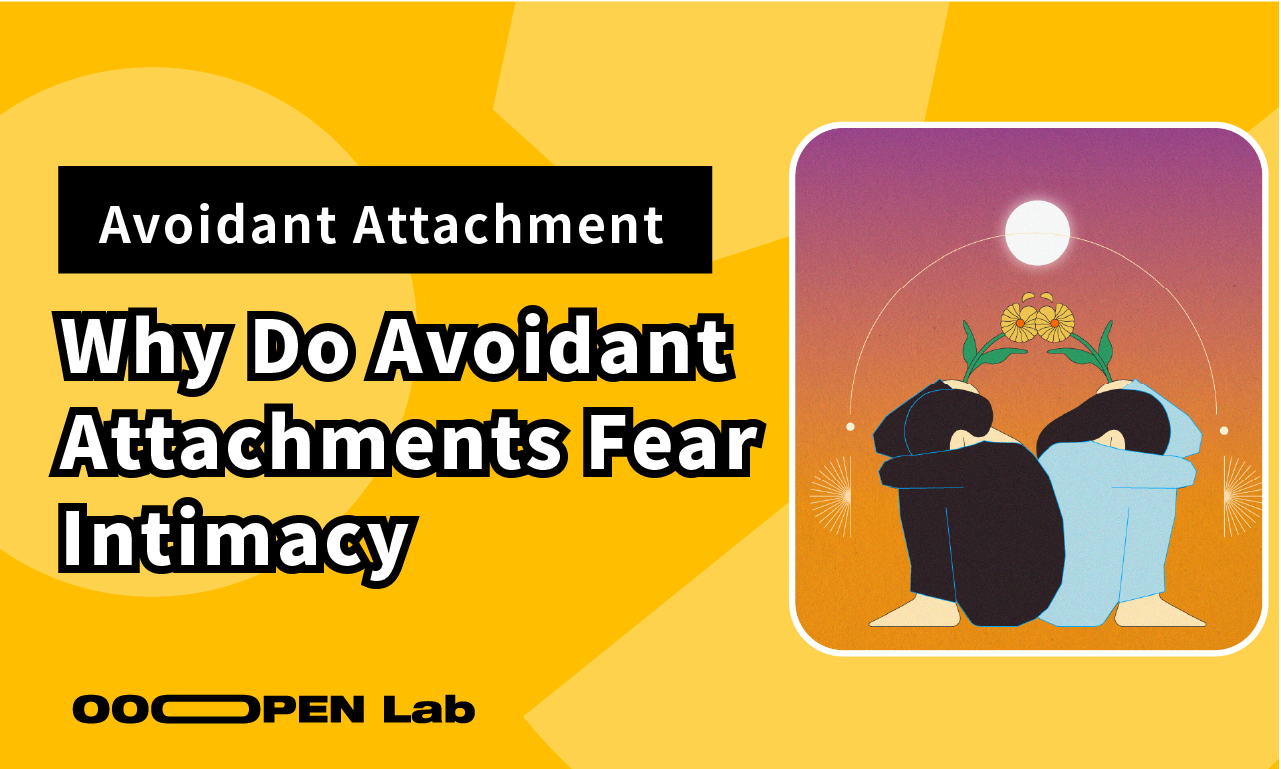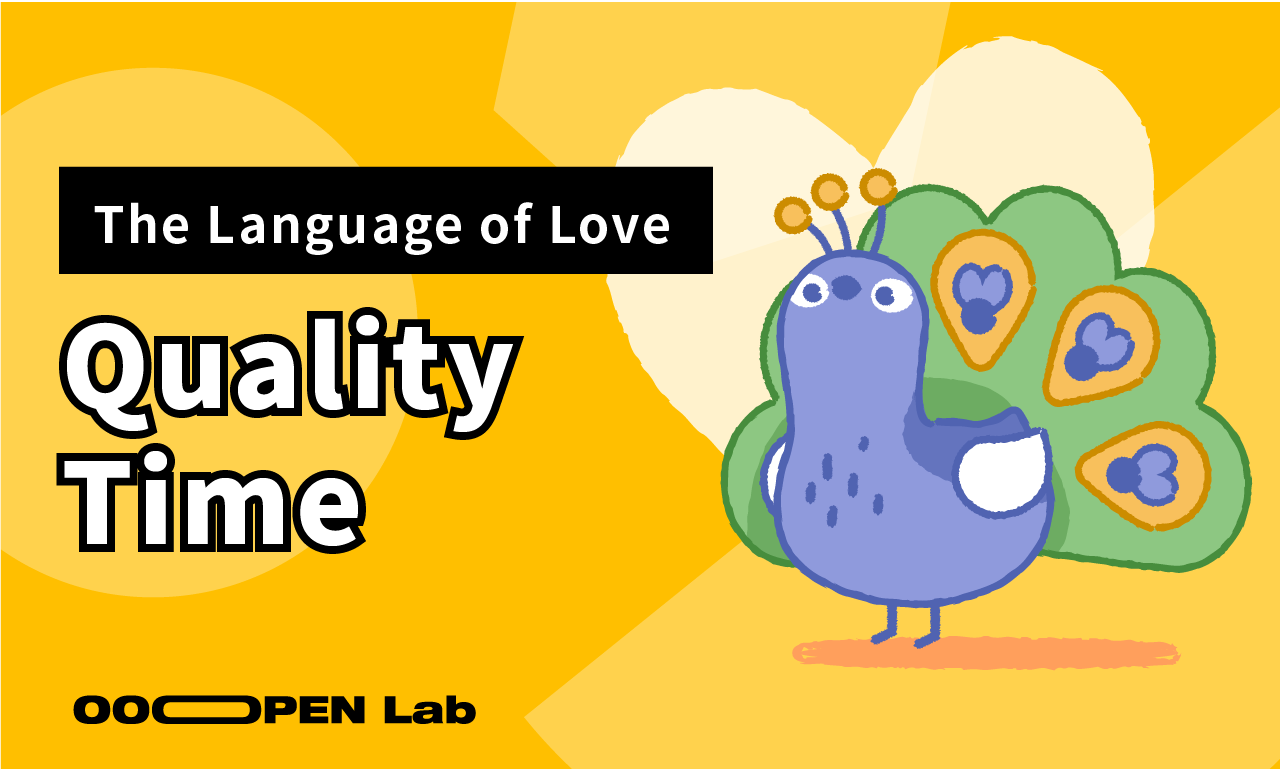- What Is Avoidant Attachment?
- How Does Avoidant Attachment Develop?
- Five Characteristics of Avoidant Attachment
- The Strengths of Avoidant Attachment Individuals
- How to Interact with an Avoidant Attachment Partner
- Three Steps to Overcoming Avoidant Attachment
What Is Avoidant Attachment?
Avoidant attachment is a type of insecure attachment in attachment theory. Children with this attachment style do not cry when separated from their parents and may ignore or actively avoid them upon their return, appearing indifferent to relationships.
As a result, people with avoidant attachment often give off a sense of emotional distance in relationships, making it hard for others to determine whether they are truly close or distant.
“Individuals characterized by attachment avoidance strive to maintain psychological distance from others and inhibit the activation of the attachment system. They tend to suppress attachment-related thoughts and feelings, deny attachment needs, downplay the importance of close relationships, and emphasize self-reliance and independence.”
Mikulincer, M., & Shaver, P. R. (2007). Attachment in Adulthood: Structure, Dynamics, and Change. Guilford Press. (Page 124, summarizing characteristics of avoidance).
Although they may seem cold and detached, avoidant individuals are not as indifferent as they appear on the surface.
Their tendency to withdraw and display emotional coldness is actually a coping mechanism developed to avoid feeling hurt or distressed again.
Children with avoidant attachment often grow up in environments where their emotions were not adequately soothed by caregivers or were met with rigid, authoritarian parenting. This led to increased stress and anxiety.
In response, these children learn to excessively regulate their emotions, almost as if they are turning off a switch entirely.
To protect themselves from distress, they escape from painful environments and suppress their feelings. They deny the importance of emotions and relationships as a defense mechanism to avoid getting hurt.
How Does Avoidant Attachment Develop?
“An avoidant pattern is thought to emerge from interactions with caregivers who consistently rebuff the infant’s bids for comfort and closeness, or who are overly intrusive and controlling, thereby disrupting the child’s autonomous exploration. Consequently, the child learns to minimize the expression of attachment needs to avoid expected rejection or interference.”
Cassidy, J., & Berlin, L. J. (1994). The insecure/ambivalent pattern of attachment: Theory and research. Child Development, 65(4), 971–991. (While discussing ambivalent, this paper often contrasts with avoidant development pathways based on Ainsworth’s work). Alternative source confirming this: Ainsworth et al. (1978).
Avoidant attachment often stems from childhood emotional neglect.
Neglect occurs when parents fail to respond to a child’s emotional needs or deliberately ignore them.
Throughout childhood, having one’s emotions and feelings understood is crucial.
Emotional neglect can generally be categorized into four types:
1. Being Ignored Over a Long Period
When a child’s emotions and thoughts are consistently overlooked, they may start avoiding relationships or situations that could trigger emotional responses, as a defense mechanism against the pain of neglect.
Neglect can manifest in various ways, such as parents who rarely interact with their children, dislike physical touch, or avoid hugging them. Some parents are simply too busy to properly care for or understand their children.
For example, when a child cries in discomfort, no one asks whether they are hungry, feeling unwell, or frightened by something.
To a child, such distressing emotions can feel overwhelming. Without empathy or support to help them process these emotions, they experience profound loneliness, fear, and pain.
As children grow, being understood and empathized with teaches them that emotions are not something to be feared or avoided.
Through this guidance, they gain the courage and energy to recognize and understand their own feelings.
Without such support, their emotional resilience weakens significantly.
Now, consider children raised in neglectful environments. Their relationships with their parents may appear functional but emotionally distant, as though no deep emotional connection exists.
This detachment is a self-protective mechanism—they avoid emotional engagement to prevent the pain of being ignored again.
By maintaining distance, they believe they can shield themselves from further hurt.
2. Being Overly Controlled
When parents exert excessive control over their child’s life, depriving them of the opportunity to express their own emotions, they are, in essence, ignoring the child’s feelings.
These children grow up believing that their emotions and preferences are unimportant—only their parents’ rules and standards matter.
Such parents often believe they “know what’s best” for their child or even assume they “know exactly” what their child wants, making decisions on their behalf.
As a result, the child’s true thoughts are never acknowledged, leading to immense emotional pressure.
Instead of feeling loved, they experience relationships as an imposition—like being forced to accept gifts they do not want.
When a child is repeatedly ignored or misunderstood regarding their genuine preferences, they lose the ability to clearly express themselves.
Even as adults, they may seek close relationships but struggle to trust others because their early experiences were filled with neglect and coercion.
3. Domestic Violence and Parental Conflict
In households plagued by violence, abuse, or relentless conflicts, a child’s thoughts and feelings are completely disregarded.
Children naturally expect their parents to be caregivers who fulfill their needs and provide love.
However, when parents instead become sources of fear and suffering, the child may internalize the belief that “Mom and Dad act this way because I did something wrong.”
Externally, they witness chaos, while internally, they feel guilt and self-blame.
Faced with overwhelming pressure and the need to survive in a fear-ridden environment, children learn to suppress their emotions—both to cope and to avoid additional distress.
When a child’s first exposure to relationships is so broken and dysfunctional, trusting in love or long-term relationships becomes extremely difficult.
As they grow up, the fear and anxiety associated with relationships feel far more real than any potential joy or happiness.
Understanding their deep-seated negative emotions toward relationships makes it clear why they tend to adopt a distant and withdrawn approach.
4. Dysfunctional Caregivers
When a child’s primary caregiver struggles with mental illness, emotional distress, substance abuse, or addiction, they may be unable to take care of themselves, let alone their child.
In some cases, children even find themselves shouldering the responsibility of caring for the entire household.
In such environments, it becomes difficult for them to experience the joy that relationships can bring.
To them, responsibility and intimacy are painful burdens rather than sources of love and security.
To survive, they often suppress their emotions entirely, avoiding feelings that might lead to additional pain.
Five Characteristics of Avoidant Attachment
1. Pseudo-Independence / Counter-Dependence
Pseudo-independence and counter-dependence are key traits of avoidant attachment. People with these characteristics appear highly self-sufficient, seemingly needing no one and trusting no one.
“To manage potential distress related to attachment, avoidant individuals employ ‘deactivating strategies.’ These include suppressing thoughts and memories that elicit distress, maintaining emotional distance, focusing attention away from attachment threats, insisting on self-reliance, and downplaying the importance of relationships. This can manifest as compulsive self-sufficiency or pseudo-independence.”
Mikulincer, M., Shaver, P. R., & Pereg, D. (2003). Attachment theory and affect regulation: The dynamics, development, and cognitive consequences of attachment-related strategies. Motivation and Emotion, 27(2), 77–102.
They rarely express their emotional needs and avoid relying on others or seeking help. When interacting with them, they may seem disinterested in others, often giving off an impression of coldness or self-centeredness.
If asked why they behave this way, they might respond with something like, “Emotions are unnecessary; don’t expect help from others.”
However, beneath this independent exterior lies a softer, more vulnerable side. They do feel emotions, but to cope, they may become workaholics or excessively immerse themselves in activities (such as sports, nightlife, or keeping themselves constantly busy).
By staying perpetually occupied, they can momentarily drown out their inner voices and avoid confronting their own emotions.
2. Alexithymia (Difficulty Identifying and Expressing Emotions)
Alexithymia refers to the difficulty in recognizing and articulating emotions. People with this trait struggle to understand their own feelings, let alone those of others.
Conversations with them often revolve around facts, analyses, and logical discussions, rather than emotional self-disclosure. When they do express emotions, they may only use broad terms like “good,” “bad,” or “angry,” without deeper elaboration.
Despite their limited emotional awareness, they often experience vague discomfort—something feels “off” or “not quite right.”
Thus, rather than verbalizing their emotions, they may frequently complain about physical discomfort, such as muscle aches or digestive issues. These bodily symptoms serve as evidence of suppressed emotions.
Not being able to articulate emotions does not mean they do not exist. The discomfort they feel in their body is proof that their emotions are very real.
3. Hiding Their True Emotions
Avoidant individuals often seek to conceal their feelings, especially negative emotions like sadness and fear.
To them, experiencing emotions is undesirable, or even shameful. Since negative emotions feel overwhelming, they may excessively worry that if others notice their vulnerability, they will be rejected or disliked.
As a result, they choose to avoid acknowledging their emotions and keep them hidden from others.
If no one knows, it’s as if these emotions don’t exist—ensuring that no one sees them as flawed or weak.
4. Fear of Intimacy
For avoidant attachment individuals, forming deep emotional connections can feel overwhelming and stressful.
Intimacy and emotional bonds often imply long-term commitment and responsibility—concepts they find burdensome.
Because responsibility feels suffocating and carries the risk of emotional pain, they tend to withdraw when faced with relationships requiring commitment.
When someone expresses strong emotional dependence or care for them, avoidant individuals may feel extremely uncomfortable.
They also become uneasy when they catch themselves developing emotional reliance on someone else.
They dislike being needed or needing others, making it difficult for them to form emotional connections.
As a result, they fear closeness, resist others depending on them, and struggle with forming intimate relationships.
5. Over-Reliance on Rationality
Avoidant individuals are not adept at handling their emotions, often distancing themselves from emotional experiences.
Since emotions feel unpredictable and uncontrollable, they prefer analyzing situations logically, breaking them down into concrete details.
By ensuring everything appears within their control, they can avoid feeling emotions and, in turn, reduce their anxiety.
While this hyper-rational approach may seem reasonable, it can sometimes go too far—making them appear emotionally distant and detached.
The Strengths of Avoidant Attachment Individuals
They Give Others Enough Space
Avoidant attachment individuals highly value their own personal space, making them particularly aware of the importance of maintaining boundaries.
Without needing explicit reminders, they intuitively understand that everyone has their own comfort zone. As a result, they are not overly clingy in relationships and are naturally respectful and empathetic toward their partner’s need for distance.
They Rarely Initiate Conflicts
For those with avoidant attachment, avoiding conflict and steering clear of emotional discussions is often their way of maintaining peace.
Because of this, they tend to avoid triggering direct arguments. In relationships, they are rarely the ones to initiate disputes.
They Are Rational
Since avoidant attachment individuals struggle with processing emotions, they tend to adopt a rational perspective on everything as a way to reduce their own anxiety.
Emotional outbursts and excessive sentimentality are uncommon for them.
So, if you need someone who is logical and can help you make sense of relationship challenges, they might be your best choice!
How to Interact with an Avoidant Attachment Partner
Understand Their Behavioral Patterns
Avoidant attachment individuals are not avoiding people; rather, they are running away from the emotional wounds that intimacy may reopen.
While their tendency to evade responsibility, commitment, and closeness can be frustrating, respecting their fears is a crucial step in connecting with them.
It’s important to recognize that their behavior is not a personal attack or a sign of dislike—it’s a reflection of their own struggles. Understanding this can help navigate the relationship more effectively.
However, understanding them does not mean suppressing your own feelings of frustration or discomfort.
Avoid excessive self-blame, maintain curiosity about their experiences, and at the same time, take care of your own emotions.
Give Them Enough Time and Space
Avoidant attachment individuals need personal space to process their emotions and regulate the anxiety triggered by intimacy.
Providing them with sufficient time and space is essential; otherwise, the dynamic can turn into a chase—you pursue, and they withdraw even further.
Take Care of Yourself
For individuals with other attachment styles, intimacy is a vital part of relationships. When engaging with an avoidant partner, remember that your needs are also important.
Navigating a relationship with an avoidant partner can be challenging, so it’s essential to stay attuned to your own emotions throughout the process.
If you find yourself struggling, seeking help from a therapist can be a good option. A neutral third party can help assess whether the relationship is truly at an impasse or if there are other areas where you might need support.
Relationships are the result of interactions between both individuals. If your partner is unable to change in the short term, don’t force yourself to endure beyond your limits.
By prioritizing your own well-being, you may also gain a fresh perspective on the relationship.
Three Steps to Overcoming Avoidant Attachment
People with avoidant attachment often resist change, but sometimes they realize that avoidance doesn’t actually solve their problems.
They might also notice that, while their current situation causes them pain, constantly making their loved ones unhappy isn’t a comfortable feeling either.
However, change doesn’t happen overnight. We need to recognize the difficult experiences we’ve had and uncover their positive meanings.
For example, if we once believed emotions were harmful, we can start understanding that emotions are not always scary. Having emotions and experiencing intimacy can enrich our lives, making them more vibrant and fulfilling.
Aside from seeking professional help from therapists, we can also practice change gradually using these three simple steps to build a secure attachment style.
Step 1: Understand That Emotions Have Value
If you have an avoidant attachment style, you might think emotions are unnecessary or even bothersome.
But emotions play a crucial role in life—they alert us to danger and tell us when we need to escape.
In the past, your emotions helped you survive by signaling when to withdraw from painful experiences and keep discomfort at bay.
However, building close relationships requires reclaiming your emotions.
Emotions are not a burden; they are an essential way for us to understand and adapt to our environment.
When we reconnect with our emotions, our relationships transform from black-and-white silent films to vibrant, colorful movies. This enriches our connections with others and deepens our experiences.
Step 2: Identify and Accept Your Feelings
For many people with avoidant attachment, emotions feel unfamiliar.
Since they have ignored their emotions for so long, they often feel like they have “no feelings” or experience a mental blank.
Reconnecting with emotions starts with recognizing and naming them, reclaiming the ability to feel.
Begin by noticing your body—pay attention to your movements, posture, and five senses (sight, sound, smell, taste, and touch).
Allow yourself to connect with these sensations and be present with them.
When you feel discomfort, try to explore it internally. Is the pain in a specific location? Is your hunger mild or intense? Are you just slightly full or completely satisfied?
As you progress, observe your emotional shifts—does your body relax when you’re happy? Where do you feel tension when you’re nervous? Do you notice warmth in any part of your body when you’re angry?
When vague and chaotic feelings become clearer and nameable, you not only experience a richer emotional life but also develop a sense of inner stability.
A key reminder: Trust that you have the ability to recognize and regulate your emotions!
Step 3: Share and Express Your Feelings
Once you identify your emotions, practice turning them into words so they don’t remain vague, floating sensations.
Start by finding someone you trust—a family member, partner, friend, teacher, or therapist—anyone who listens without harsh criticism and supports you in your journey.
Practice sharing your thoughts and notice how they respond.
As you interact, pay attention to how it feels to exchange emotions and be genuinely heard. These meaningful experiences of connection can be incredibly rewarding.
As you collect more positive interactions with others, these joyful moments will become a source of strength.
Over time, you may realize that you don’t always have to run away.
To the past version of you who wasn’t treated well—you have endured so much. Give yourself time. You are worthy of love and capable of creating beautiful memories of connection.
Embrace intimacy and allow yourself to experience the love it brings!
Mindy
Master’s Degree in Clinical Psychology, Licensed Clinical Psychologist (License No. 2802).
Mindy has completed clinical training in psychiatric and child mental health departments in hospitals. She specializes in psychodynamic therapy, psychodrama, and cognitive behavioral therapy (CBT). Passionate about promoting psychological knowledge, she serves as a psychology content consultant and mental health seminar speaker.




